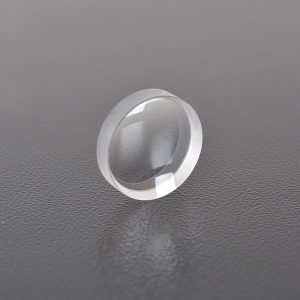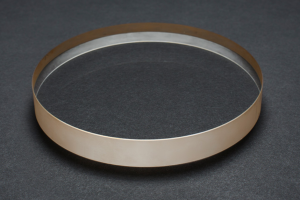
Small Prism: a Wonderful Tool in the Optical World
When light passes through a fingertip-sized prism, it refracts not only a rainbow spectrum, but also infinite possibilities for scientific exploration. From precise focusing in a microscope to photon manipulation in quantum communication, small prisms build bridges of optics with their tiny bodies, quietly rewriting the boundaries of human cognition in medical diagnosis, astronomical observation, and even nanotechnology.
In the world of optics, prisms are a common and important optical element, and “small prisms” as one of them, although small in size, play an indispensable role in scientific experiments, optical instruments, and daily life. This article will take you to an in-depth understanding of the principles and applications of small prisms and their unique value in the field of optics.
1. The basic principle of small prisms
A prism is a polyhedron made of transparent materials (such as glass, crystal, or plastic), usually with a triangular cross-section. Small prisms refer to smaller prisms, and their working principle is the same as that of ordinary prisms, mainly based on the refraction and dispersion of light.
When light enters another medium from one medium, the propagation speed of the light changes due to the different optical densities of the medium, resulting in the deflection of the direction of the light, a phenomenon called refraction. The special shape of the prism causes the light to refract twice when entering and leaving the prism, which ultimately deflects the light.
In addition, the prism also has the characteristic of dispersion. Since light of different wavelengths has different refractive indices in the medium, white light will be decomposed into spectra of different colors after passing through the prism, forming a rainbow-like color band. This phenomenon was first discovered by Newton through a prism experiment and became an important basis for optical research.
2. Application fields of small prisms
Although small prisms are small in size, their application range is very wide, covering many fields in scientific research, industrial manufacturing, medical equipment and daily life.
1. Optical instruments
Small prisms are widely used in various optical instruments, such as telescopes, microscopes, lasers, etc. In telescopes, small prisms can be used to change the direction of the light path to help observers see distant objects more clearly. In lasers, small prisms are used to adjust the direction and focus of laser beams.
2. Spectral analysis
Due to the dispersion characteristics of small prisms, they are often used in spectrometers. By decomposing light into spectra of different wavelengths, scientists can analyze the composition and structure of substances, which is widely used in chemistry, physics, astronomy and other fields.
3. Medical equipment
In the medical field, small prisms are used in endoscopes, microscopes and other equipment to help doctors observe the internal structure of the human body more clearly. For example, the small prisms in the endoscope can guide light to parts that are difficult to observe directly, providing important support for diagnosis and treatment.
4. Applications in daily life
Small prisms also appear in our daily lives. For example, small prisms are used in some camera lenses to adjust the light path and improve the image quality. In addition, small prisms are also used in decorations, toys, etc., using their refractive and dispersion characteristics to create beautiful light and shadow effects.
3. Manufacturing and materials of small prisms
The manufacturing of small prisms requires high-precision processing technology to ensure that their surfaces are smooth and their angles are accurate. Commonly used materials include optical glass, quartz, plastics, etc. Optical glass has become the preferred material for manufacturing small prisms due to its high transparency and stable optical properties. Quartz is suitable for applications in special environments due to its high temperature resistance and corrosion resistance.
During the manufacturing process, each surface of the small prism needs to be finely ground and polished to ensure that the light will not be scattered or distorted when passing through. In addition, the angle design of the prism is also very critical. Different angles will affect the refraction and dispersion effects of light.
4. Future development of small prisms
With the continuous advancement of science and technology, the application fields of small prisms are also expanding. In cutting-edge fields such as nanotechnology and quantum optics, the miniaturization and high precision of small prisms have become a hot topic of research. For example, scientists are developing nanoscale small prisms for manipulating and detecting single photons, providing new tools for quantum communication and quantum computing.
In addition, with the advancement of materials science, new materials such as metamaterials are also used to manufacture small prisms. These materials have unique optical properties and can achieve optical effects that traditional materials cannot achieve, opening up new possibilities for the application of small prisms.
Conclusion
Although the small prism is small in size, its role in the field of optics cannot be underestimated. From scientific research to daily life, the small prism has brought us countless conveniences and surprises with its unique optical properties. With the continuous advancement of technology, the application prospects of small prisms will be broader and continue to play its wonderful role in the optical world.
Through the introduction of this article, I believe you have a deeper understanding of small prisms. Whether as a tool for scientific research or a small object in daily life, small prisms show the charm of optics in their unique way.
Hanzhong Brisun Optics Co., Ltd. Is the high precision optical element manufacturer provides customized production of Various optical lenses, including spherical lens, cylindrical lens, optical window, mirror, prism, filter, metal base mirror and other high-precision optical elements. The base materials include various optical glass, fused quartz, calcium fluoride (CaF2), zinc selenide (ZnSe), germanium (GE), silicon (SI), sapphire, metal and other materials. And provide antireflective film, high reflection film, spectroscopic film, metal film and other optical coatings.
Welcome to OEM and Purchasing!


